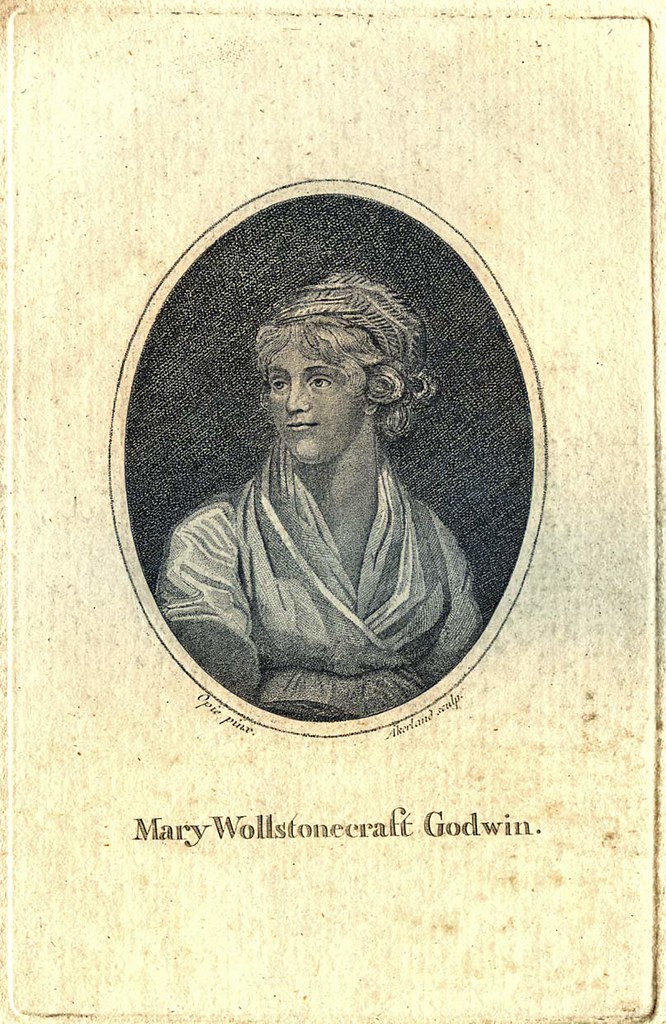Women in Rhetoric
Gabrielle Miller

“Mary Wollstonecraft Godwin” by Stifts- och landsbiblioteket i Skara is licensed under CC BY 2.0
Mary Wollstonecraft was a British feminist writer during the Enlightenment in the eighteenth century. Born in 1759, Wollstonecraft was raised in an unstable home environment where her father was financially unsuccessful and abusive. Being the intellectual that she was, Wollstonecraft left home in 1780 in order to create her own successful journey. Wollstonecraft’s most famous text, A Vindication of the Rights of Woman, was written as a response to the Enlightenment essays being published on the rights of man. Although it is considered a feminist and philosophical work first, A Vindication of the Rights of Woman uses a rhetorical approach in order to appeal to the world that women deserved representation, respect, and legal and social equality.
Following the American and French Revolutions, European philosophers and scholars wrote many texts on human rights and the structure of democratic government. However, many of the published works focused heavily on a patriarchal society with laws that seemed as if they were written to protect and include men only. Women were largely viewed as subservient at the time, so representation for women’s rights was almost entirely lacking in these documents. As a response, Mary Wollstonecraft wrote A Vindication of the Rights of Woman in 1791 to provide context to the revolutionized world that women’s rights were of the same importance as men’s.
A Vindication of the Rights of Woman, published in 1792, was—and still is—one of the most influential examples of feminist rhetoric. Wollstonecraft employs logos, ethos, and pathos in her essay, as she was delivering an address on how women should be represented in government and society. Writing that men “[consider] women as females rather than human creatures,” Wollstonecraft starts her vindication strongly with her emotional, powerful claim that women are not viewed as entirely human. Wollstonecraft also noted that she was speaking on behalf of the entire female sex in her pamphlet, which employs both ethos and pathos. She understood that the rights previously outlined by men did not include women and were therefore unethical in their approach. Continuing, she calls into question the logical reasoning of the rights of man outlined so numerously before her. Wollstonecraft writes, “It is necessary to pursue the course of reason as it has been perplexed and involved in error.” She uses logos to identify the flawed logic of the exclusion of women in governing documents and the societal understanding that women were submissive to men in every way. Hopefully appealing to the logic of her audience, Wollstonecraft, throughout her vindication, repeatedly shows that women should be regarded as men’s equals under the law and in the social world.
Mary Wollstonecraft continues to empower generations of like-minded women. She pleaded and reasoned for female representation on a national and international level. In doing so, she used the rhetorical approaches logos, ethos, and pathos in order to efficiently convey her point to her audience and back up her arguments.
Sources
- “Mary Wollstonecraft, A Vindication of the Rights of Woman.” The British Library, The British Library, 6 Feb. 2014, www.bl.uk/collection-items/mary-wollstonecraft-a-vindication-of-the-rights-of-woman.
- “Mary Wollstonecraft.” Biography.com, A&E Networks Television, 11 May 2020, www.biography.com/scholar/mary-wollstonecraft.
- Wollstonecraft, Mary. “A Vindication of the Rights of Woman With Strictures on Political and Moral Subjects.” Gutenberg, 2 Nov. 2020, www.gutenberg.org/cache/epub/3420/pg3420.html.
